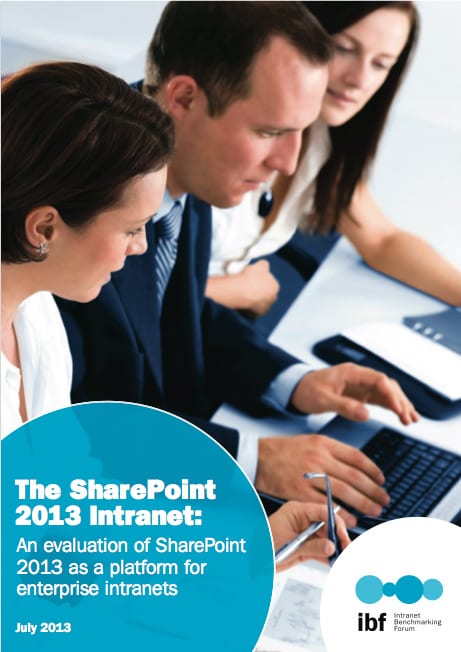SharePoint 2013: it’s not about the technology
I’m here to deliver a message that you might find surprising, maybe even perplexing. Actually, it’s not my message, it’s a message from Sam Marshall, author of DWG’s new report on SharePoint 2013.
And to be totally accurate, the message isn’t just from Sam: his report not only resulted from his hands-on research into SharePoint 2013, but also quotes OpenText and even Microsoft itself.
So, what’s this important message?
Success with SharePoint 2013 isn’t about the technology.
Yikes. And here we all are talking about a) how SharePoint 2013’s social features compare with other options, or b) how to tune the upgraded search engine, or c) how to benefit from improved multi-lingual functionality (all topics covered in DWG’s new report on SharePoint 2013).
But those technical features aren’t the issues that will differentiate successful implementations from failures. In Microsoft’s own words:
We learned that it’s not about a feature checklist; it’s about implementing a vision for social that integrates into the way people work. I believe a common pitfall for us in IT is that we’re asked to deploy social tools because ‘it’s cool’ or ‘all the kids are doing it’. – Microsoft
What if I told you that adoption/training was the greatest barrier to successful SharePoint implementation? And that 1) strategy and 2) governance were the next two big challenges?

The bottom line is this: like any other major organizational change effort, success lies in coordination with stakeholders, involvement of users, communication and collaboration. (See DWG’s research report on intranet strategy and governance for a wealth of insights on this topic.)
The real challenge of implementing SharePoint 2013 is the same as that of any other intranet software. You need to convince thousands of colleagues in different job roles, with different levels of technical skills and different job pressures (and maybe different primary languages) to learn about and use the new/updated intranet.
In order to implement SharePoint 2013 properly you do need to understand the technology and how to implement it properly. With SharePoint, perhaps more than any other intranet software, that is a daunting challenge. Some of SharePoint’s new features raise very specific governance and adoption issues, which Sam covers in the paper.
But contrary to popular belief, the technology questions aren’t the ones that can scuttle your latest intranet project. DWG’s new report on SharePoint 2013 explores these non-technical issues along with many others.
Table of contents from DWG’s new SharePoint 2013 report:
- An overview of SharePoint 2013
- Collaboration and social networking
- Publishing and internal communications
- Search, metadata and analytics
- Mobile SharePoint and apps
- SharePoint’s digital workplace fit
- Governance, adoption and organizational readiness
- Planning a move to SharePoint 2013
- Case studies
- Critical success factors
[one_half] [/one_half] [one_half_last]
[/one_half] [one_half_last]
Get your free executive summary of DWG’s latest research on SharePoint.
Vendor neutral, in-depth, hype-free.
[cta]Download now[/cta][/one_half_last]
If you’re interested in reading the full report, learn more about DWG membership. DWG members get access to this full report, along with dozens of other high quality research papers and much more.
Categorised in: Intranets, Research reports, Strategy & governance
